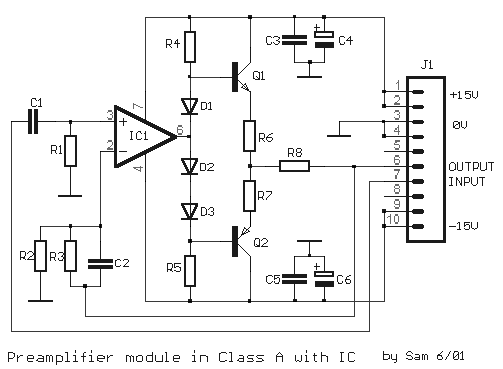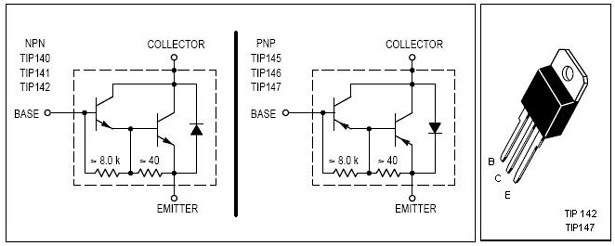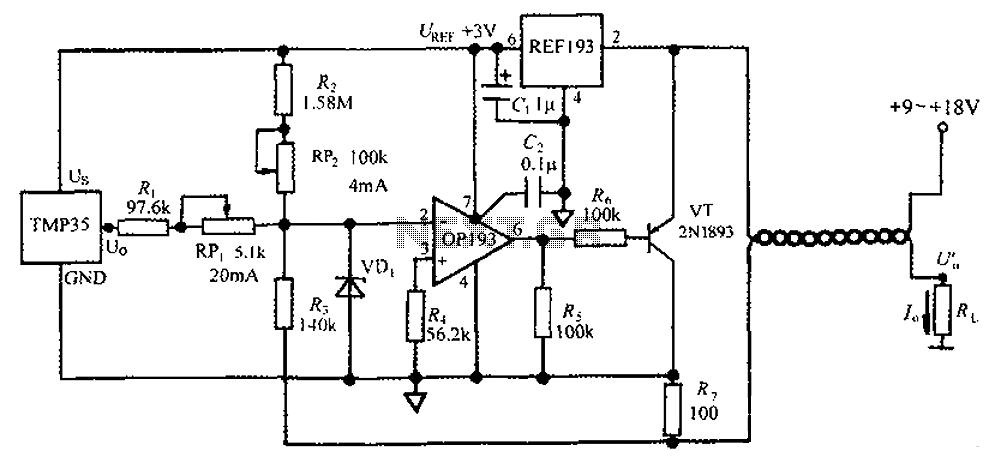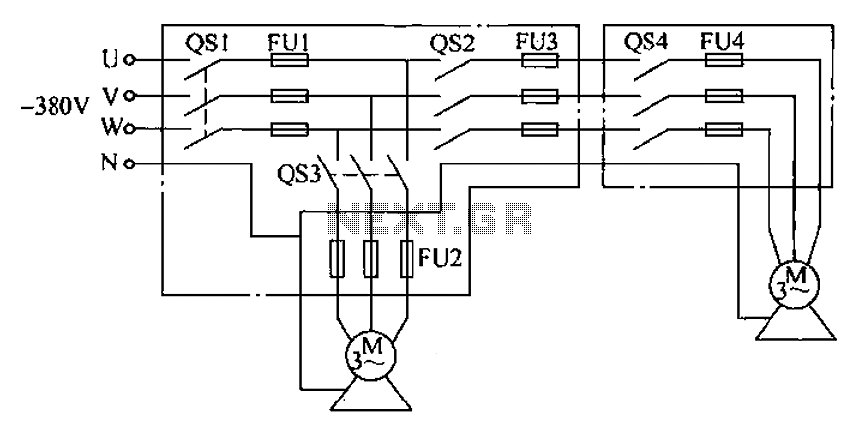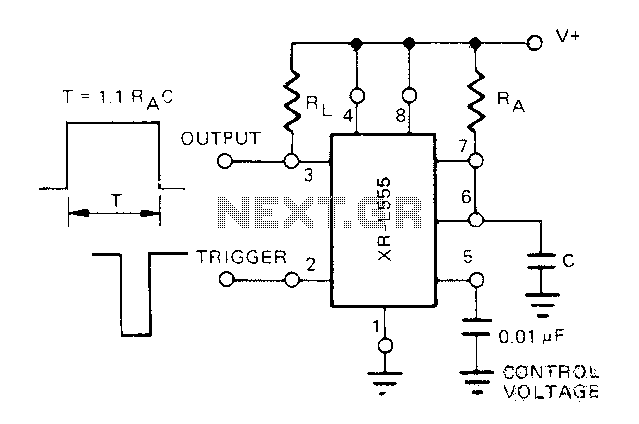
how to build a 2KVA inverter circuit diagram
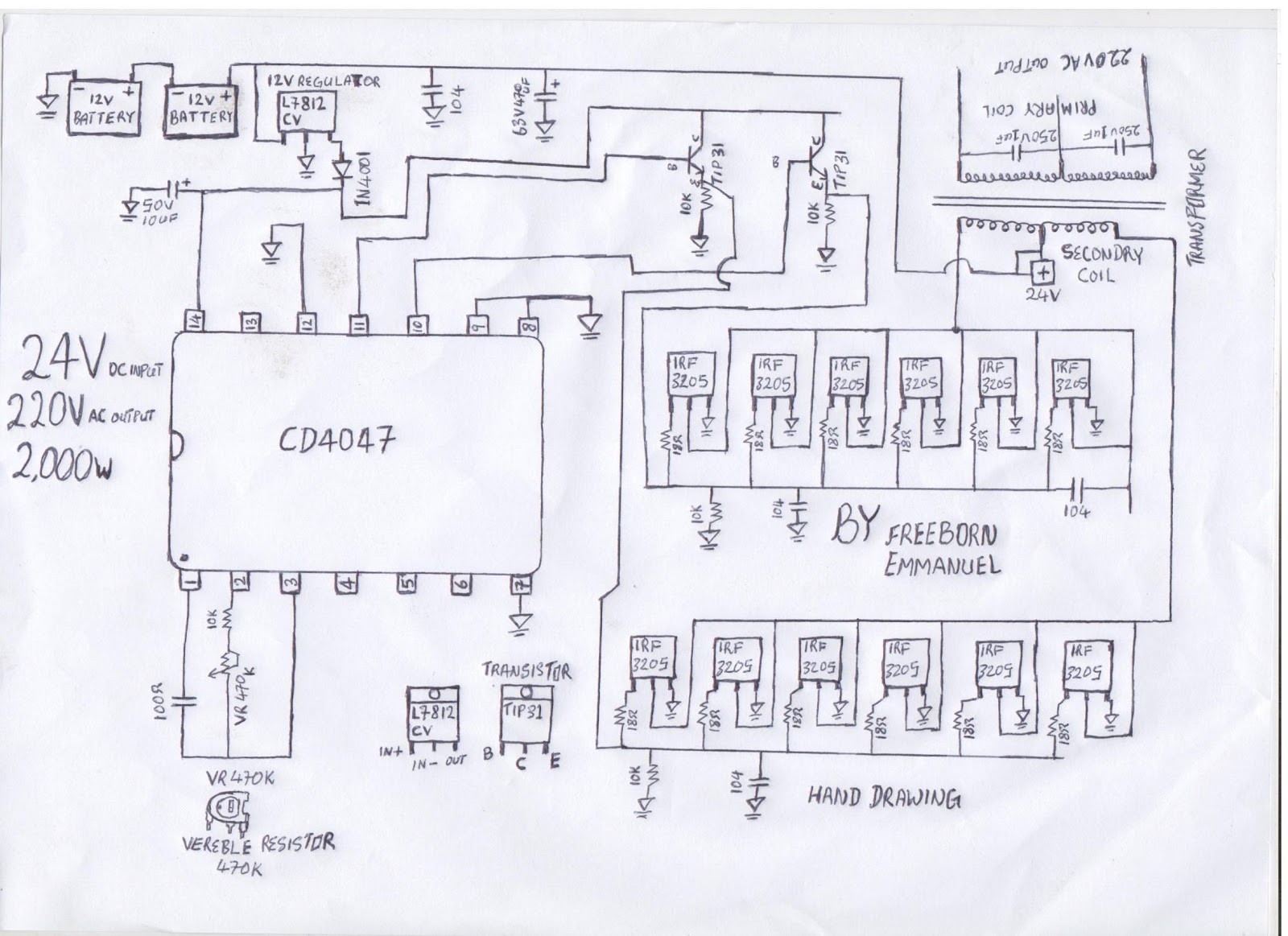
The diagram illustrates a modified square wave inverter circuit. By adjusting the frequency resistor (VR 470k), the inverter's output frequency can be optimized to effectively power a freezer compressor and various other electronic appliances in a living room. The circuit is designed to minimize battery drain while maintaining a low-cost design. This inverter is not based on a chopper transformer circuit; instead, it utilizes a solid transformer-based design. Detailed instructions will be provided on how to wind the transformer.
The modified square wave inverter circuit operates by converting direct current (DC) into alternating current (AC) using a transformer. The circuit's core component is the transformer, which is responsible for stepping up the voltage to a suitable level for powering household appliances. The inverter's design allows for frequency adjustment through the variable resistor (VR 470k), which alters the timing of the switching elements in the circuit, thereby modifying the output frequency.
The inverter employs a solid transformer, which is more efficient compared to chopper-based designs. This type of transformer typically consists of a core made from magnetic material, with primary and secondary windings. The primary winding is connected to the DC power source, while the secondary winding delivers the AC output. The winding configuration and the number of turns in each winding are critical for determining the output voltage and current capacity of the inverter.
To ensure optimal performance, the transformer must be carefully wound according to specific guidelines. The wire gauge, number of turns, and core material all contribute to the efficiency and effectiveness of the inverter. A well-designed transformer will minimize losses, allowing the inverter to operate efficiently without excessive battery drain.
Additionally, the circuit may include protective components such as fuses or circuit breakers to prevent damage from overcurrent conditions. Capacitors may also be used to filter the output, smoothing out the waveform and reducing electromagnetic interference (EMI), which can be particularly important when powering sensitive electronic devices.
Overall, this modified square wave inverter circuit provides a cost-effective solution for converting DC to AC, making it suitable for various applications in residential settings. The ability to adjust the output frequency enhances its versatility, allowing it to power a range of appliances while maintaining energy efficiency.the diagram is a modify square wave inverter circuit diagram, and if you adjust the frequency by adjusting or turning the frequency resistor (VR 47Ok) the inverter output frequency can be strong enough to power a freezer compressor and some other electronics appliances in a living room. the circuit dont drain battery so fast and its very cheap to design. the inverter is not a chopper transformer circuit base inverter it is a solid transformer base inverter, i will take time to arrange how you can wind the transformer. 🔗 External reference
The modified square wave inverter circuit operates by converting direct current (DC) into alternating current (AC) using a transformer. The circuit's core component is the transformer, which is responsible for stepping up the voltage to a suitable level for powering household appliances. The inverter's design allows for frequency adjustment through the variable resistor (VR 470k), which alters the timing of the switching elements in the circuit, thereby modifying the output frequency.
The inverter employs a solid transformer, which is more efficient compared to chopper-based designs. This type of transformer typically consists of a core made from magnetic material, with primary and secondary windings. The primary winding is connected to the DC power source, while the secondary winding delivers the AC output. The winding configuration and the number of turns in each winding are critical for determining the output voltage and current capacity of the inverter.
To ensure optimal performance, the transformer must be carefully wound according to specific guidelines. The wire gauge, number of turns, and core material all contribute to the efficiency and effectiveness of the inverter. A well-designed transformer will minimize losses, allowing the inverter to operate efficiently without excessive battery drain.
Additionally, the circuit may include protective components such as fuses or circuit breakers to prevent damage from overcurrent conditions. Capacitors may also be used to filter the output, smoothing out the waveform and reducing electromagnetic interference (EMI), which can be particularly important when powering sensitive electronic devices.
Overall, this modified square wave inverter circuit provides a cost-effective solution for converting DC to AC, making it suitable for various applications in residential settings. The ability to adjust the output frequency enhances its versatility, allowing it to power a range of appliances while maintaining energy efficiency.the diagram is a modify square wave inverter circuit diagram, and if you adjust the frequency by adjusting or turning the frequency resistor (VR 47Ok) the inverter output frequency can be strong enough to power a freezer compressor and some other electronics appliances in a living room. the circuit dont drain battery so fast and its very cheap to design. the inverter is not a chopper transformer circuit base inverter it is a solid transformer base inverter, i will take time to arrange how you can wind the transformer. 🔗 External reference
